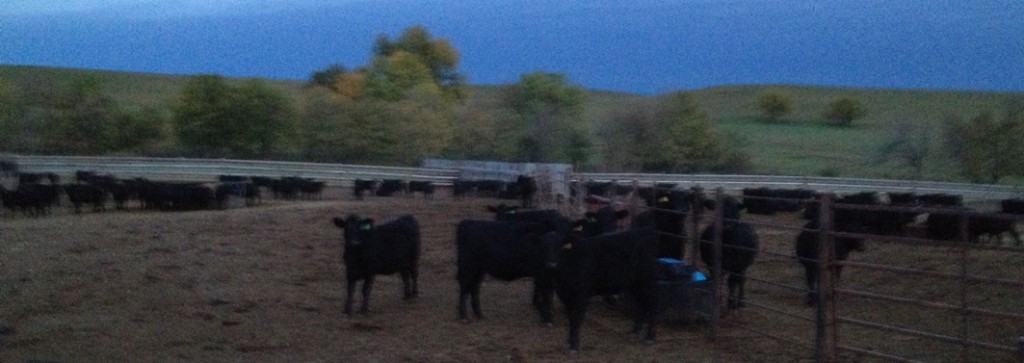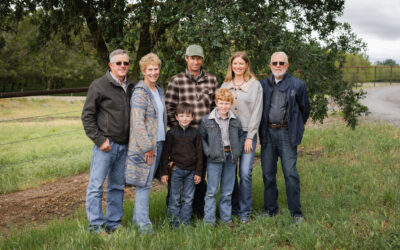Crossbred pressure?
There I was, dreaming again. I had been thinking about my straightbred commercial Angus cowherd a lot that day.
The calves weaned as heavy as last year despite the drought, and they stayed healthy in the lot. The cows bred back to where I had to sell more just for age to make room for better heifers coming in that would intensify the best of my cow families. It was good for cash flow and genetic improvement.
That night I was going over the reasons for my breeding program. We have two pastures for cows with the younger, better ones kept near home so I can breed them artificially (AI) to highly proven bulls that improve gain and grade along with cowherd traits.
I started AI back in the 1990s and got serious about it after feeding my first pen of calves and getting as many Standards as upper Choice. Last year, they were all Choice or higher with 20% Prime. But since way more than half of my calves were heifers, and we have extra silage for backgrounding, I’m not finishing steers this year.
Maybe it’s time to go back to blindness on individual quality and figure they are all acceptable on average; I can just aim for more pounds. Would that open the door to crossbreeding that many animal scientists point to?
Not for me, because the cow families are still the most important part of my herd, and there is no simple alternative that adds to predictability in my replacements. Using crossbred bulls on straight cows gives me a wider range of genetics in heifers, and some lines may match up differently with different crossbred bulls.
Yes, they might stay in the herd longer, but how does that help if I am less satisfied, if the consumer is less satisfied as we give up on beating 20% Prime? I would rather sell younger cows at a premium because I know my heifers are better.
I nodded off to sleep thinking I will go back to finishing steers next year and keep my herd on its straightbred course.
But then the phone rang. Yeah: in my dream…
I thought, who uses the phone these days? They could have texted me or emailed. But anyway, expecting a corporate cold-caller raising funds for the less fortunate, or a vinyl siding salesman, I picked up to hear some kind of robo-call. It was trying to sell ideas.
Politics, I thought. Always politics this time of year. But it was about my cowherd, not my country. Well, indirectly it was about my country, because if I kept going down this road of straightbreeding, I was not being patriotic. This country’s beef industry was built upon the concept that all breeds are created equal but different, and we must use those differences to our advantage.
Or be thought a pitiful fool, the robocaller said. Just Google the words “heterosis, cattle, and straight breeding.” you’ll see what the dream caller meant.
Don’t ask me how a robocaller could know my cowherd breeding program—this was a dream, remember? And if it was already crazy, it got crazier.
The composite voice then said it represented some kind of Orthodox Bovine Church I was supposed to be part of, but apparently had fallen away from over the years. Where was my FAITH?
There’s great power in the proven science of hybrid vigor, and just as much in the dogma of complementarity, “taking advantage of” variations among the equal-but-different breeds to leap ahead. Using one breed to chase herd improvement is the slippery slope to Hell, the caller proclaimed.
Oh, man. I sure didn’t want to slip on any of what it was saying. But then I was in a pasture where anything slippery was easy to dodge, and there was no phone, not even a mobile.
There was just this uniform, straightbred herd that conventional wisdom was challenging. Were they eating my free lunch every day? Could I really earn another 4% per year, if only I believed enough in the system to stop believing in my use of data and in my cow families?
It made me wonder, in my dream. Then I woke up.
Until next time, let’s keep targeting the brand and building tomorrow together.
Steve
You may also like
Legacy in the Golden Land
On a quiet stretch of Northern California rangeland, a different story unfolds. The Borror family’s legacy modestly speaks through the cattle they raise, the ground they steward. The generations who’ve made a life here demonstrate commitment to doing things right, even when no one is watching.
Marbling, Feet and Fertility: Are they related?
The Angus breed has enough genetic diversity to allow breeders, and their commercial bull customers, to make progress across multiple traits simultaneously. One bloodline may be high in marbling but does not check the boxes you need for other traits. That does not mean marbling is the cause—it simply means your search for the ideal genetic pairing is not done.
Working for Premiums
The commercial Angus rancher from Collyer, Kansas, came back for daily homework in 1999 after a year at college. For 25 years now, he’s studied all the ways to grow his family’s W6 Cattle cow-calf herd with Angus at the base. Guided by data, Walt worked to improve the herd from zero Primes to averaging 60 percent. Learning what drives premiums prompted improvement.





